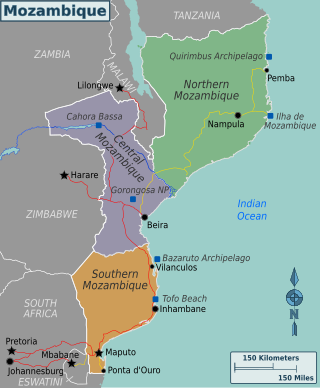Examples by country
Haiti
Haiti, a nation that shares the island of Hispaniola with the Dominican Republic, has been greatly affected by HIV. As of 2014, the adult prevalence rate of HIV is estimated to be 1.93%. [18] For some time, Haiti had highest rate in the Americas and the highest outside of Sub-Saharan Africa. [1] Like many other countries, the disease began as being associated with men who have sex with men, specifically men in Haiti who engaged in commercial sex with male tourists. Later, the disease crossed over into the heterosexual community, with the main areas of risk being sex with female sex workers, casual sex with partners infected with AIDS, and blood transfusions. [1]
The course of the disease in Haiti has been rapid and aggressive, compounded by high rates of tuberculosis and other diseases of poverty. A large number of children were born to HIV-positive mothers before proper treatment was available, leading to a spike in infant mortality. Negative effects have been observed in Haiti, one being the impact on the economy due to a shrinking tourism industry. The response of the healthcare in Haiti has been fairly effective. Due to swift identification of the disease, a coordinated response was undertaken relatively quickly. [1]
Several measures were taken, such as giving the Haitian Red Cross complete control of the blood bank, launching a national awareness campaign, and setting up local health units that provide HIV treatment with antiretroviral drugs. Although Haiti has undergone civil unrest for several years, a priority was placed on the HIV/AIDS epidemic, and strong relationships were formed with the private health sector. Through both prevention and care, Haiti continues to manage the spread of the disease. [1]
Barbados
Currently, the adult prevalence rate of HIV in Barbados is estimated to be 1.5 percent. [5] : page: 196 When HIV first struck Barbados, the island nation was completely underprepared to handle such a significant and detrimental disease. [1] The first case was recognized in 1984, after which those infected with AIDS were heavily stigmatized. In contrast to system in Haiti, much of the healthcare response in Barbados was carried out by the public sector. Several successes of Barbados in its fight against HIV include universal screening, confidentiality, an AIDS information center and hotline, and special attention focused on at-risk groups. Overall, the achievements should undoubtedly be praised, especially considering the fact that these responses were carried out during an economic depression in the 1990s, as well as during a period of severe stigmatization of HIV-positive people. [1]
Jamaica
Jamaica is another island nation that has been hit hard by the HIV/AIDS epidemic, with an adult prevalence rate of around 1.5 percent. [1] Currently, AIDS is the leading cause of death among two at-risk groups, young children aged 1–4 and young women aged 20–29. Both the public and private health sectors have played important roles in the response to the epidemic. From providing healthcare to seeking international funds, instituting educational programs to providing condoms, the Jamaican government has done much in prioritizing the HIV crisis. [1]
Notably, as part of their strategic plan. Jamaica has set of goal of normalizing HIV as part of normal societal discourse. This would undoubtedly help to reduce stigma towards HIV-positive individuals. The relative successes of the Jamaican program are also notable, as the country has managed to secure its blood supply, expand STI treatment centers, introduce proper surveillance of HIV, and make condoms widely available. Jamaica still seeks to strengthen its response, especially in terms of reducing discrimination and expanding prevention and intervention programs. [1]
Cuba
This section reads like a press release or a news article and may be largely based on routine coverage .(January 2013) |
The current HIV adult prevalence rate in Cuba is estimated to be about 0.07 percent, one of the lowest in the world and certainly the lowest in the region. [1] Three of the major modes of transmissions in other nations, mother-to-child transmission, transmission through blood transfusion, and through intravenous drug use, are virtually non-existent in Cuba. Instead, sexual contact accounts for approximately 99 percent of all cases. In terms of sexuality, Cuba has followed a trajectory nearly opposite of the norm. Most of the first cases diagnosed were heterosexual men, but the disease then crossed over into the gay community as male-to-male sexual contact began to spread the disease. Today, men who have sex with men (MSM) are one of the most at-risk groups, making up for around 86 percent of men infected with HIV in Cuba.[ citation needed ]
With the establishment of the Working Group for Confronting and Fighting AIDS, the government and nongovernmental organizations created comprehensive measures to fight the disease. Firstly, Cuba banned the importation of all human blood products and destroyed potentially infected supplies, effectively eliminating transmission of HIV through blood transfusions. Next, the country provided wide-scale HIV testing for Cubans who had travelled abroad and potentially brought the disease back into the country. The most important measures served to prevent sexual transmission, namely through education programs, medical examinations, and admittance of HIV-positive individuals into specialized health centers called sanatoria. These sanatoria were somewhat controversial, especially in terms of possible human rights violations. Although severely isolated in the late 1980s, the program has since improved significantly, providing outlets for social integration and multiple levels of care. [1]




